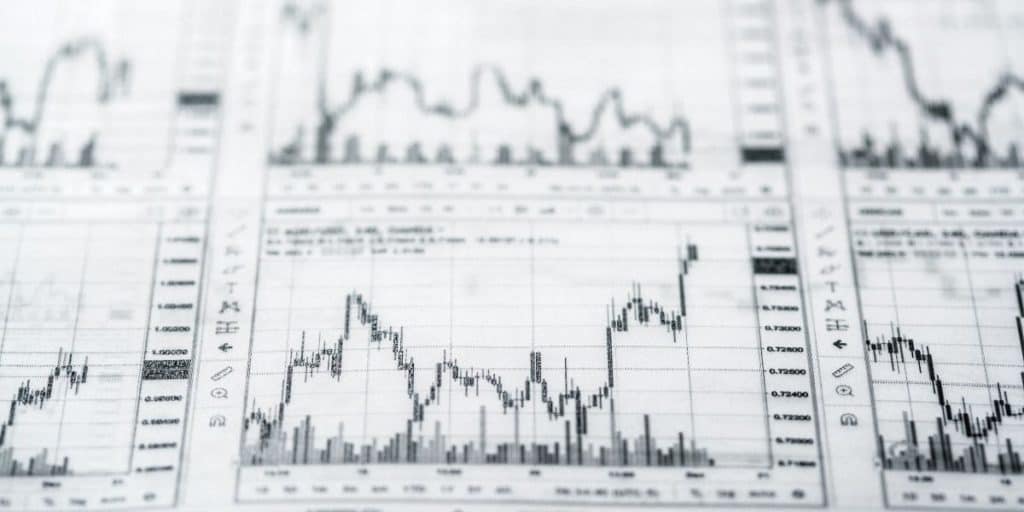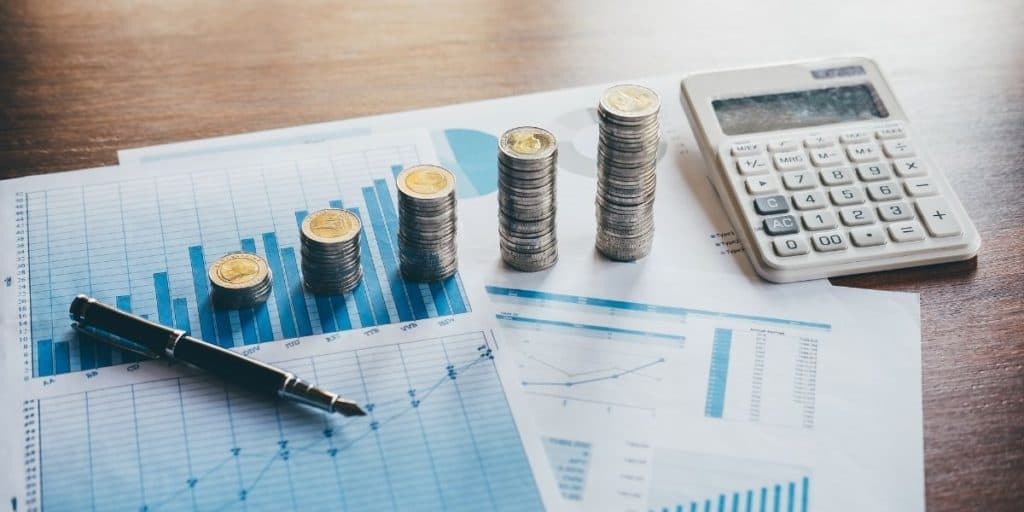When it comes to making money, Americans uniquely position themselves to find a way where there seems to be no way. This entrepreneurial spirit has grown America and continues to sustain her in ways unthought of just a decade ago. Paper Trading, for example, used to be just a way to practice trading, but now it is a simulation that gives investors practice buying and selling without risking money, and in some instances, investors make money at it.
Yes, you can make money on paper trading when entering competitions, despite your trades being based on hypothetical currency and assets. Additionally, paper trading can help you master various trading strategies, thereby helping you to earn more money on your paid investments over time.
Further in this article, we will discuss what paper trading is and how you can make money in paper trading. We’ll explore how this activity strengthens investor skills, how different paper trading competitions can help produce real income, and why these competitions are profitable for brokerage companies.
IMPORTANT SIDENOTE: I surveyed 1500+ traders to understand how social trading impacted their trading outcomes. The results shocked my belief system! Read my latest article: ‘Exploring Social Trading: Community, Profit, and Collaboration’ for my in-depth findings through the data collected from this survey!
Table of Contents
Can You Make Money From Paper Trading?
The simple answer to this question is “absolutely.” You can earn real money through winning competitions, and you can also use what you learn from paper trading scenarios to make your real trades better. However, to do this, you first have to understand what paper trading is.

A paper trade is a simulated practice in buying and selling stocks that does not utilize real currency. Many brokers make these simulators available to investors to help them master various strategies, and this practice allows investors to experience what the firm has to offer in terms of tools and education.
Simulations are practical because the fear of losing money is removed so that the investor can take risks and learn from mistakes, ultimately making them better investors. Paper trading is available in a variety of ways.
Before technological advances, these trades were literally made on paper. Investors looked at ticker tapes and executed buys and sells on paper to see how their decisions would have played out had they actually put money into the market.
Wins gave investors confidence, and losses taught them lessons, but no one lost money. This learning experience has advanced with technology, and now realistic simulators do more than pencil and paper trade simulations could do years before.
Ways To Make Money Paper Trading
When seasoned traders hear the phrase “paper trading,” they hear “time spent without profit”. So they may not utilize this tool, and they may not advise their friends who are new to the stock market to use it. In many cases, however, this thought process may be costing them money.
While most of the money made in paper trading is hypothetical, the time spent is a wise investment, especially for novice investors because the apps make it easier to master complicated concepts. This mastery helps you increase your investment portfolio’s profitability over time. Also, for those investors who need the extra incentive, paper trade competitions also offer financial rewards and other incentives.
Paper Trade Simulation Apps
The purpose of paper trading is to allow investors to practice their trading skills without losing real money, but as stated, the practice itself equates to real money. Programs like the NinjaTrader simulator help prevent novice investors from losing money, and the practice helps them make better decisions when they go live, which should equate to earning money.
Paper trading simulators are also essential because they allow you to test brokers before committing to them. Not all brokers offer paper trading simulators, but those who do are worth looking into. Note that you will have to complete a pretty lengthy registration form with most of them, but no upfront money is required. Some of those include:
- TD Ameritrade has the “thinkorswim” platform. You have to sign up for the account, and then you’ll get two virtual accounts funded with $100,000 each.
- E*Trade has a simulator as well, but you have to have an account with them to access it.
- Wall Street Survivor has a paper trading simulator and hosts competitions for various prizes. This simulator focuses on the fundamentals of investment and offers achievement badges. While there is no competition at present, they do sometimes provide real cash at certain achievement levels.
- TradingSim also has a simulator designed to increase investor confidence.
- Warrior Trading permits paper trading in US Equities markets and US Options markets.
Paper Trade Simulation Competitions
- WeBull offers a cash prize to every participant who ends the week with a positive return. Players sign up, receive virtual cash to build a portfolio, and then test their strategies. Winners receive weekly prizes.
- Young Investors Challenge is a 10-week program for middle and high school students who are given $100,000 to invest in stocks and ETFs. Students can win $10,000 in prizes. Winnings are in Canadian dollars, but there are two challenge levels, and competitors may join at any time during the 10-week challenge.
Strengthens Investor Skills
Paper trading offers little risk, which is why there are few monetary rewards attached to this activity. Still, the simulators are beneficial because they remove the risk and the stress inherent when using real money. The practice helps to build confidence, and it helps investors avoid mistakes.
The main drawback to paper trading is that the total picture is unavailable. For example, it is as easy to spend virtual money as it is to spend someone else’s money. There is no commitment nor emotional attachment to it, so with the emotional aspect of trading gone, novice investors can learn in real-time without encountering catastrophic results, but they also miss the lessons involved in an actual loss.
Another drawback to paper trading is that the simulations do not consider your trade size and several other things that could potentially impact the outcome of your trades in the real market. Still, the simulations available today are as close to active trading as anyone can come without investing real money to learn the trade. So, they are the best way for novice traders to begin because it minimizes the funds that would be lost during live trade learning curves.
Benefits of Paper Trading to Seasoned Investors
Paper trade simulators are not for novice traders alone. The stock market is brutal and can damage both the confidence and the ego of the best traders.
Those who find themselves in a losing period may benefit from stepping away from the scene and entering the virtual world of paper trading. It may be helpful to think of this time investment as Olympic medalists think of training for the next Olympic games. You are just sharpening your skills and regaining focus.
Seasoned investors can also benefit from using these simulators because they allow you to test a new strategy or setup. This process is called forward-testing. When seasoned investors can run simulations to test new strategies while still actively working on the market, they can formulate profitable strategies to make more money while minimizing risks.
Trading Competitions Are Profitable for Investment Companies
Perhaps the group that might earn the most with paper trading is brokerage companies, yet few of them offer this tool to customers. A handful of them realize that providing this technology gives novice investors the confidence they need to invest real money into the stock market. And few people will learn from one company’s simulation tool only to move to another broker once they are ready to use actual capital.

By providing paper trading simulators and offering competitions to entice novice investors to enter, they almost guarantee a return on the program’s investment. These simulators encourage research, for one thing, and in doing so, it makes more intelligent investors.
Author’s Recommendations: Top Trading and Investment Resources To Consider
Before concluding this article, I wanted to share few trading and investment resources that I have vetted, with the help of 50+ consistently profitable traders, for you. I am confident that you will greatly benefit in your trading journey by considering one or more of these resources.
- Roadmap to Becoming a Consistently Profitable Trader: I surveyed 5000+ traders (and interviewed 50+ profitable traders) to create the best possible step by step trading guide for you. Read my article: ‘7 Proven Steps To Profitable Trading’ to learn about my findings from surveying 5000+ traders, and to learn how these learnings can be leveraged to your advantage.
- Best Broker For Trading Success: I reviewed 15+ brokers and discussed my findings with 50+ consistently profitable traders. Post all that assessment, the best all round broker that our collective minds picked was M1 Finance. If you are looking to open a brokerage account, choose M1 Finance. You just cannot go wrong with it! Click Here To Sign Up for M1 Finance Today!
- Best Trading Courses You Can Take For Free (or at extremely low cost): I reviewed 30+ trading courses to recommend you the best resource, and found Trading Strategies in Emerging Markets Specialization on Coursera to beat every other course on the market. Plus, if you complete this course within 7 days, it will cost you nothing and will be absolutely free! Click Here To Sign Up Today! (If you don’t find this course valuable, you can cancel anytime within the 7 days trial period and pay nothing.)
- Best Passive Investment Platform For Exponential (Potentially) Returns: By enabling passive investments into a Bitcoin ETF, Acorns gives you the best opportunity to make exponential returns on your passive investments. Plus, Acorns is currently offering a $15 bonus for simply singing up to their platform – so that is one opportunity you don’t want to miss! (assuming you are interested in this platform). Click Here To Get $15 Bonus By Signing Up For Acorns Today! (It will take you less than 5 mins to sign up, and it is totally worth it.)
Conclusion
No one will earn a lot of money making paper trades. There are competitions available that will reward winners with cash prizes and stock; however, there are only a few of them, and the cash/stock payouts from these competitions might not be as significant.
The natural way people make money in paper trading is by learning how and what to research, practicing strategies, and reducing their learning curve so that they do not lose money when they go live with real money.
BEFORE YOU GO: Don’t forget to check out my latest article – ‘Exploring Social Trading: Community, Profit, and Collaboration’. I surveyed 1500+ traders to identify the impact social trading can have on your trading performance, and shared all my findings in this article. No matter where you are in your trading journey today, I am confident that you will find this article helpful!
Affiliate Disclosure: We participate in several affiliate programs and may be compensated if you make a purchase using our referral link, at no additional cost to you. You can, however, trust the integrity of our recommendation. Affiliate programs exist even for products that we are not recommending. We only choose to recommend you the products that we actually believe in.
Recent Posts
Exploring Social Trading: Community, Profit, and Collaboration
Have you ever wondered about the potential of social trading? Well, that curiosity led me on a fascinating journey of surveying over 1500 traders. The aim? To understand if being part of a trading...
Ah, wine investment! A tantalizing topic that piques the curiosity of many. A complex, yet alluring world where passions and profits intertwine. But, is it a good idea? In this article, we'll uncork...
